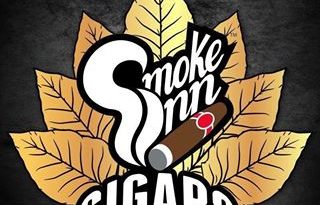Become a Cigar Smoker in 5 Easy Steps – How to Light a Cigar
Introduction
Over the course of five blog posts, I share my advice on how to become a cigar smoker in 5 easy steps. Step One discusses buying your first cigar. Step Two describes the various types of cigar cutters and how to cut a cigar. This third post discusses how to light a cigar.
Step 3: How to Light a Cigar
You are now an expert in selecting your first cigars and cutting the sticks without ruining your investment. You’ve likely lit and smoked a few cigars by now but with a bit of trepidation on how to get the best light. Trust me, this ain’t like lighting a Marlboro Red. Is there still such a thing as a Marlboro Red? Beats the sh&^ out of me.
Tools of the Trade
Before you learn how to light a cigar, let’s review the various unacceptable and acceptable devices used to create the flame required to light a cigar.
Unacceptable Cigar Lighting Devices or How to Really F*&k Up a Great Cigar:
- Book Matches: Book Matches are likely your first option in lighting a cigar. Don’t do it! The sulfur in the book match will impart a crappy taste to your cigar. Pass.
- Candles: Hmm, do you think you should use that fruity pebbles scented candle your wife uses while taking a bubble bath? Not unless you want a fruity pebbles flavored cigar. Pass.
- Zippo: All your cigarette smoking buddies use Zippo lighter to light their cigarettes and they look really cool with their KISS Zippo lighter. It seems logical to use a Zippo lighter to light your cigar. Don’t do it! The fuel used in a Zippo lighter is petroleum distillate or synthetic isoparaffinic hydrocarbon, commonly referred to as lighter fluid or naphtha. Based on the technical terms and number of syllables, using a Zippo lighter is obviously a non-starter when you are smoking an all-natural product consisting of leaves, water, and vegetable gum. I tried it once for the hell of it and almost died. My cigar had hints of oil, gasoline, and death. If you like lighter fluid flavored cigars, go for it. If not, try one of the lighting devices listed below.
Acceptable Cigar Lighting Devices
- Stick Matches: Stick matches work great for lighting a cigar. Make sure the ignition material burns off before you light your cigar. Short stick matches are a royal pain in the ass as you likely won’t have enough time with a single short stick match to light your cigar. I’ve gone through a whole box of the damn things trying to light a cigar. Use long stick matches and it is much easier. The big negative is wind. It takes skill and patience to light a cigar in the wind. . . cup your hand just right, turn your body to block the wind, strike the match, and rotate the cigar. It is harder than ballet. Just ask Smokey. A few of my smoking buddies will only use stick matches. I am usually half done with my cigar by the time they get their cigar lit. On the plus side, when you have a stick match, you know you have fire. When you have a lighter, you might not have fire if you run out of fluid.
- Soft Flame Butane Lighter: A soft flame lighters works pretty well for lighting a cigar. Your simple $1.29 disposable lighter fits the bill and there are fancy soft flame lighters you can buy from the likes of Xikar and Colibri if you want to look really cool. They work just fine except in the wind.
- Jet Flame Butane Lighter: A jet flame butane lighter is the most common lighter used by cigar smokers. You can get them with up to four jets to light your cigar in an instant. They are resistant to the wind and they are reliable if you maintain them properly. My local Quik Trip sells a disposable jet flame butane lighter for a couple of bucks and they work great. I could write an entire post on jet flame butane lighters so I’ll stop here. In the future, I’ll write my diatribe on these types of lighters including the good, bad, and the ugly. You can spend a few bucks or a few hundred bucks on a jet flame butane lighter. My favorite is any lighter made by Vertigo. They are inexpensive, work great, and well, work great. Some of the Xikar lighters are awesome; some, not so much. I’ve never had a Colibri that works over the long haul but some folks swear by them.
- Cedar Spill: A cedar spill is simply a shaped piece of cedar. I love them as you get a wonderful cedar flavor added to your cigar. You need a lighter to light the cedar spill and then use the cedar spill to light the cigar. See below for guidance on using a cedar spill.
How to Light a Cigar: Five Methods
Finally, you get to light a cigar! Here are five methods on how to light that stogie you’ve been staring at out of the corner of your eye as you read this post.
The Traditional Method
For the newbies out there, the traditional method is a simple as it gets. Cut the foot of the cigar with a cutter or punch. Then, use a wooden match or butane lighter to light the cigar.
Here’s how to light your cigar by toasting the foot first. Hold the cigar at a 45-degree angle over the flame. Rotate the cigar to light the entire circumference of the exposed tobacco. Do not let the flame touch the cigar. There is plenty of heat to light your cigar without dousing your cigar in the flame. If you hold the lighter or match too close to your cigar, you will singe your cigar and get some nasty flavors. This is called “toasting the foot” of your cigar. sounds odd, but the purpose of toasting is to ignite the outer layers of the tobacco that hold the cigar together. If you just held up a match and began to draw, only the inner tobacco, known as the filler, will ignite. If this happens, the cigar will burn unevenly and develop a poorly shaped ash.
Some people puff the cigar while lighting it and some people wait until the end of the cigar has red embers when you blow on the cigar. This is your choice.
After you think your cigar is lit, take a look at the foot and make sure the cigar is burning evenly. You can gently blow on the foot to see if the cigar is completely lit. Once the cigar is lit, let it sit for a minute as the short delay will allow the freshly-lit cigar to stabilize.
The Cedar Spill Method
This method is not so much a method as it is an alternative lighting source. A spill is a slender piece of wood or twisted paper, for lighting candles, lamps, campfires, or fireplaces. Before more modern inventions such as lighters and chemical matchsticks, a cedar spill was the traditional method to light a cigar. Wood of various lengths, thickness, and species were torn into narrow strips and lit with whatever flame source was handy. Cigars were slowly roasted and toasted, allowing the oils and water within the tobacco leaves to slowly smolder, ignite, and reveal almost immediately the full flavor and aroma of the cigar. Today, cigar spills are made from Spanish cedar, the same stuff that lines your humidor.
To light your cigar, first, light the spill by holding the spill downward and the hold a match or lighter to the bottom of the spill. Hold the spill downward until the spill is completely lit. Next, toast the foot of the cigar using the Traditional Method documented above. Your spill will likely continue to burn. To extinguish your spill, simply hold it so the flame faces up and the rest of the spill faces the ground. The spill will slowly extinguish itself.
You can buy 20 cedar spills from Amazon for less than $20. 15. If you want to spend a little more money, you can find more cedar spills at Commonwealth Cedar Spills. Commonwealth Cedar Spills are the Rolls Royce of cedar spills. They are fantastic.
The Winston Churchill Method
Sir Winston Churchill always kept hundreds of cigars in his Chartwell, UK residence. He smoked around 10 cigars a day and didn’t die from lung cancer. Eat that FDA, NIH, and the rest of the U.S. Government agencies that love to infringe on our cigar smoking rights.
Churchill had a unique way of preparing his cigars for smoking. Instead of using a cigar cutter Sir Winston moistened his cigars and pierced them with a match.
Churchill received cigar cutters over the years as gifts and kept one of them, a cigar piercer, attached to his watch chain. But he did not use any of the cutters he owned on his cigars. He preferred to moisten the end of the cigar and poke a hole through it with one of the extra-long wooden matches he had specially imported in large cartons from Canada or with his cigar piercer that was about the same shape as a wooden match. He would then blow through the cigar from the other end to make sure it would draw. Finally, he would light it, sometimes with the candle that he kept nearby in case the cigar went out. If you use this method, skip the candle part. Churchill was an expert cigar smoker but he didn’t have the luxury of a new fangled multiple jet lighter!
The Jacques Puisais Method
Smoking is normally a luxury and enjoyable experience. Jacques Puisais made it a scientific experience, called the “La Méthode de Jacques Puisais”, or “The Method of Jacques Puisais”.
Mr. Puisais, the director of the French Institute of Taste, developed his personal theory about the lighting of the cigar. In his studies, he determined that when the flame emits heat, there is a temperature gap between the head and the foot of the cigar that creates a vacuum that sucks in impurities from the source of the flame. From his view, if you light up a cigar after having cut or punched its head, part of the smoke and impurities end up in the middle of the cigar.
Enough of science class. So, what the heck is The Method of Jaques Puisais? Simple. Toast the foot of your cigar prior to cutting the head. Blow on the embers to ensure you completely light the cigar. Toast the foot more if needed.
The c.gar Method
I have my own method for lighting a cigar which we will affectionately call, “The c.gar Method”. Finally, I am famous! I use lighters, matches, and cedar spills interchangeably so your source of heat doesn’t matter with this method. My method is a combination or offshoot of both the Traditional Method and the Jacques Puisais Method. After cutting the cigar, I then place my thumb over the head of the cigar and toast the foot. I do this to minimize the impurities imparted by the flame by eliminating the vacuum effect identified by Puisais. Pretty simple but I find the first few puffs of my cigar to be a lot more pleasant.
Conclusion
Before you decide on your method for lighting cigars, try each of the methods described above. Step Four will be on the interweb soon. Happy herfing!
c.gar




Pingback: Become a Cigar Smoker in 5 Easy Steps - How to Buy, Prepare, and Maintain a Humidor
Pingback: Become a Cigar Smoker in 5 Easy Steps - Join the Cigar Community
Thanks for this informative article. I always wondered why nobody uses a zippo to light a cigar.